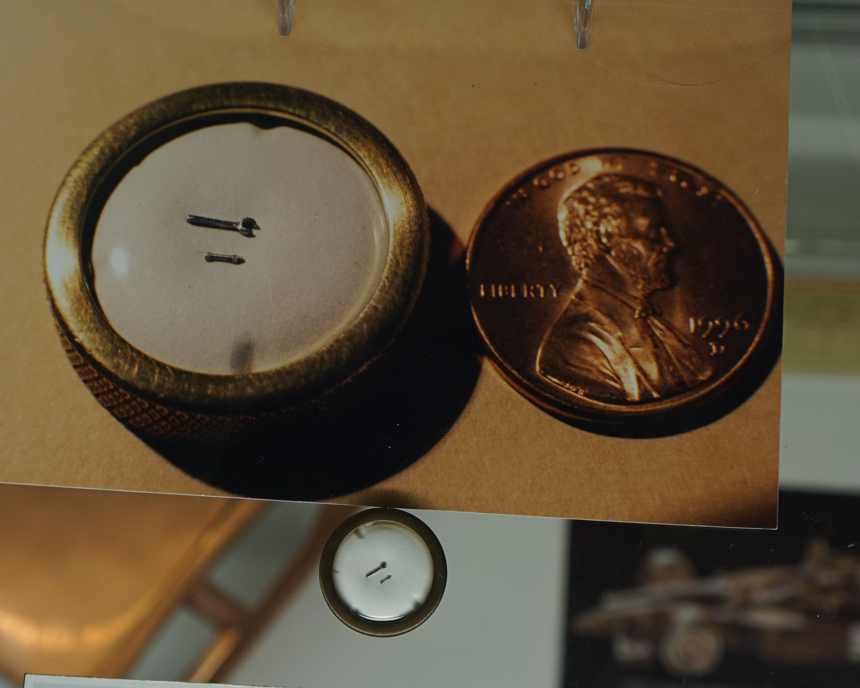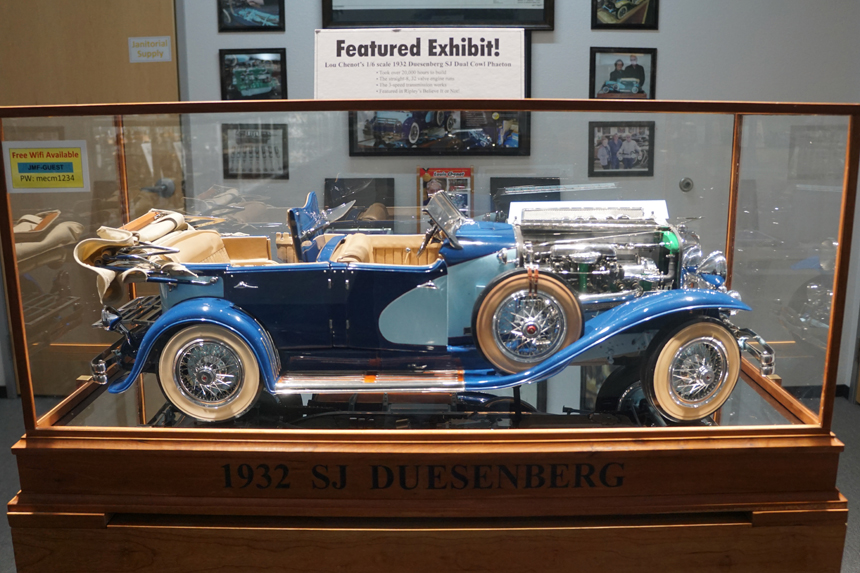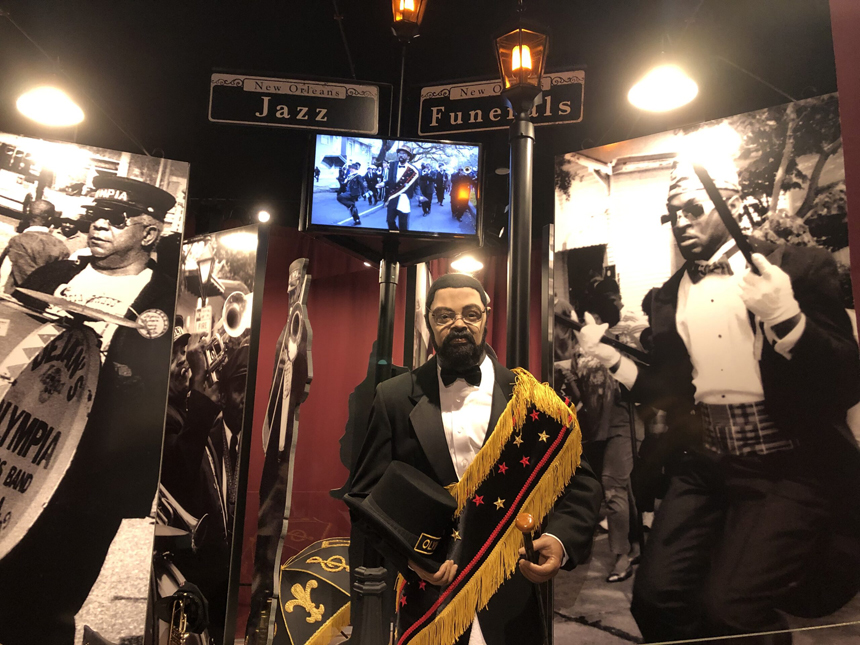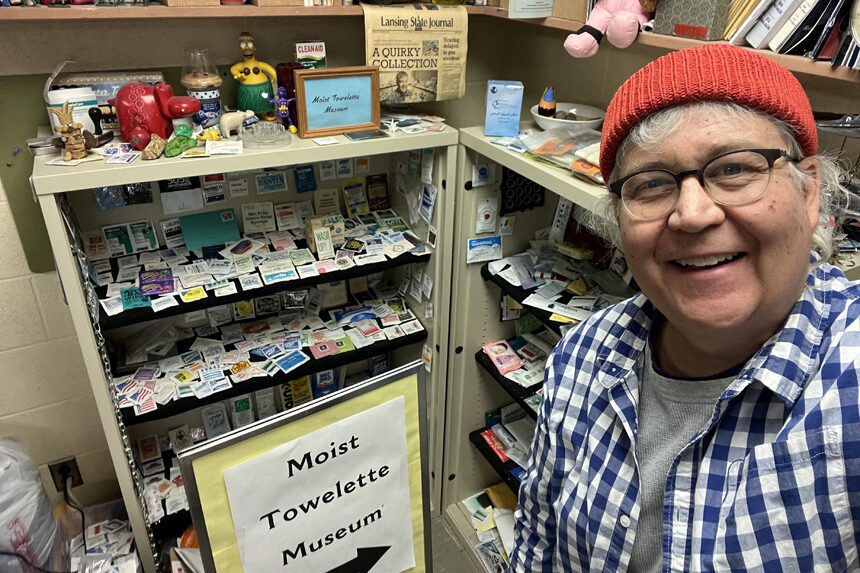You can have your dinosaur skeletons and Old Master paintings. I’ll gladly drive a few hundred miles out of my way to visit museums that feature quirky, one-of-a-kind specialties you find almost nowhere else.
The ESSE Purse Museum
Little Rock, AR
essepursemuseum.com

It may not surprise you to learn there are only two purse museums in the world, but you would probably never guess that the only one in the Western Hemisphere sits in a storefront along Main Street in Little Rock, Arkansas.
I must admit I first ducked into the ESSE Purse Museum primarily to escape the hot Arkansas summer sun. But as that primal scent of leather drifted up my nostrils, I was drawn irresistibly into a realm of vintage purses, pocketbooks, and clutches.
Unlike at many museums, which save the transactional part for the end, here you enter through the gift shop: A store offering a dizzying selection of purses from the world’s top names as well as boutique creators.
Pushing through the murmuring shoppers (“Look! That red Wendy Stevens I’ve been looking for!”), I found the entrance to the museum gallery.
Hundreds upon hundreds of purses line the walls and fill the display cases. The permanent exhibition, “A Century of Women and Handbags 1900-1999,” explores not only the evolution of purse styles, but also how they reflect the shifting role of women in society over that time (“ESSE” is drawn from the Latin imperative “to be”).
And so I followed a pocketbook chronology beginning at the turn of the last century. A small, shimmering, metallic clutch purse with a snap-shut top seemed innocuous enough, until a nearby exhibit label explained that its introduction marked the first time American women were likely to carry their own money. A display of Art Deco Roaring ’20s purses — festooned with embroidered and even feathered decorations — included then-revolutionary Bakelite plastic versions that made stylish purses affordable for women everywhere.
Beyond the simple Leave It to Beaver-era handbags and psychedelic Flower Power creations, the collection gave way to Pop culture purses inspired by the likes of Cher, Barbie, and even Sesame Street.
There was just one thing missing, far as I could tell: The brown vinyl man purse I slung over my shoulder in the ’70s. If I can find that thing in the basement, I just might donate it.
The Moist Towelette Museum
Abrams Planetarium, Michigan State University, East Lansing, MI
moisttowelettemuseum.com

It’s confined to a few display cases, but for moist towel enthusiasts, the center of the universe is room 100 at Michigan State University’s Abrams Planetarium. That’s where, since 2002, Planetarium Production Coordinator John French has curated the world’s only museum dedicated to those alcohol-soaked squares that do everything from sterilizing surgical sites to degreasing barbecue sauce-slathered fingers.
True, you can see much of French’s towelette treasures online, but there’s nothing quite like standing in the actual presence of a complete set of Star Trek towelettes (how did you think Mr. Spock cleaned behind those ears?). Or an envelope containing an original Xerox “Waterless Typewriter Handcleaner.” Or a vintage Lufthansa Airlines towelette (made of real cloth!).
The variations seem endless, yet there is one nearly universal element to each towelette packet: the directions.
“Tear open packet, remove towelette and use.” Think you can handle that?
The Silver Ball Museum
Asbury Park, NJ and Delray Beach, FL
silverballmuseum.com

If you’ve ever wondered what became of that 2001: A Space Odyssey pinball game you poured your newspaper route money into back in 1971, or that cool backlit Dr. Who machine that frustrated you to distraction in the early ’90s, or the cathode-ray Pac-Man that gobbled up your quarters in 1980, your answer stands, blinking and ringing, within the walls of the two Silver Ball Museums, one in New Jersey and the other in Florida.
These are the ultimate hands-on museums: For a single daily admission price, the Silver Balls invite one and all to relive their misspent youth punching flipper buttons and employing futile body English (but no tilting!).
The Miniature Engineering Craftsmanship Museum
Carlsbad, CA
craftsmanshipmuseum.com
Not many museums need to provide blow-up photos of their exhibits in order to make them discernible to the naked eye. But then, there aren’t many institutions like The Miniature Engineering and Craftsmanship Museum, where the biggest thing is the museum’s mammoth name.
Set in an industrial park on the hills above coastal Carlsbad, California, MECM sprawls across a huge space lined with row upon row of physically tiny, yet enormously ingenious, creations: The world’s smallest steam engine could sit comfortably on your pinky nail. The tiniest wrench ever made has a business end smaller than Abraham Lincoln’s eye on the penny set next to it for scale. (The engineer who fashioned it needed the tool to tighten bolts on a 1/30th scale steam engine he was building.)

Standing at one end of the room, I scanned the expanse of tiny trucks and trains, mini mining machines, exquisitely engineered engines, pocket-sized planes, and little bitty buildings.
At one end, in a glass case, shone the museum’s crowning exhibit: A 1/6th scale 1932 Duesenberg SJ, created over a 10-year period by master model maker Louis Chenot. All 6,000-plus parts were created from scratch. The engine runs, the transmission works, the lights go on and off.

I was lucky enough to be shown around by the museum’s curator, Terry Miller, who took kid-like delight in firing up a line of steam engines that pocketa-pocketa-pocketed merrily.
“Look at this one,” he said, leaning in on one particular engine. “I’d never seen a rectangular piston before, but doggone it, here’s one right here.”
MECM started out as an online museum, but really the only way to truly appreciate the engineering and craftsmanship that goes into each teeny exhibit is to go and squint for yourself.
The National Museum of Funeral History
Houston, TX
nmfh.org/exhibitions

Insert your own joke here (You’ll be dead tired afterward…Don’t take that last right…You’ll really dig it), but there’s something compelling about NMFH’s stoic determination to tell the story of everybody’s final destination in a straight-faced, clear-eyed way.
It’s a safe bet that after an hour or so wandering the 30,000-square-foot exhibition space you’ll be more up to speed on funerary history and tradition than even your most Goth friends. The 17 permanent exhibits include displays about mourning during Victorian times, the 5,000-year history of embalming, presidential funerals, historic caskets (including one built for three), Japanese funerals, and a display of historic mourning photos taken at the dawn of photography, when snapping images of the recently departed was a real thing.
The grand finale: In a special exhibit sanctioned by The Vatican, you can step into a re-creation of an actual Papal funeral.
The Jelly Belly Museum
Fairfield, CA
jellybelly.com/jelly-belly-museum

There’s something endearingly low-tech about the Jelly Belly Museum, a recent addition to the candy company’s popular factory tour. Aside from scores of enormous, fancifully colored jelly beans hanging from the ceiling of a cavernous commercial building, the whole thing is really just a step or two up from a high school science fair, its bare-bones exhibits of candy making machines, vintage delivery trucks, and family history explained by stark, black, block-lettered informational signs.
Visitors follow a path defined by portable draped walls, the sort you’d find at a trade show.
So, slick the Jelly Belly Museum is emphatically not. But that’s okay: As the exhibits here explain, Jelly Belly has, for more than 150 years, been a strictly family-owned business that grew from three German immigrant brothers making mellow creme candies in Chicago to one of the best-known names in a crowded industry.
Fittingly, there’s a whole section devoted to President Ronald Reagan, who in 1981, in his trademark jocular manner, casually mentioned that he was a big Jelly Belly fan. With that kind of endorsement, sales of Jelly Belly (named for Blues legend Lead Belly) exploded.
Jelly Belly famously created an enormous portrait of Reagan. Here, visitors can marvel at jellybean likenesses of Marilyn Monroe, George Washington, Elvis Presley, and others.
And for the big finish, there’s a lineup of dancing Jelly Bellies. Just try looking for that at the Smithsonian.
Become a Saturday Evening Post member and enjoy unlimited access. Subscribe now




Comments
Thank you Bill, for presenting tours of some unexpected and delightful museums, most of us never knew of before. All are fascinating. some more (or less so) depending on the person. Love the insights here, and otherwise. The pinball would be a favorite to visit, and I appreciate your additional personal insights, Mark Yotter.
The Miniature Craftsmanship in Carlsbad, Ca. would be my 2nd favorite after the pinball, but that’s just fine with me being only a few hours away. Loved that country-flavored honky-tonk music that accompanied it. The kind that would have worked right fine if there was a museum on some fancy high-end 19th and early 20th century bordellos, I do declare.
Those two pinball museums listed also have other electronic games and skee ball and air hockey, plus they have restaurants within. That’s fine if that’s what you want. There is Wizard’s World Arcade, a Pinball gamers paradise in Huntertown Indiana, just off State Road 3. They claim to have the largest collection of Pinball machines in the world. They have around 150 machines that are all Pinball, some very old and some very new and most are somewhere in between. There is no admission fee, but the machines all take quarters, some 25 cents, most 50 cents, and a few are a dollar. They have regular league competitions and sometimes super tourneys. I spent an hour there last week and it was fun. But I live too far away to go regularly. When I was a kid the local laundromat had several pinball machines and the owner lived just two doors down from my house. When he would bring the machines home to fix or refurbish them, he would turn them on to work without money and let us close neighborhood kids play them all day. What great memories.
It was exported.